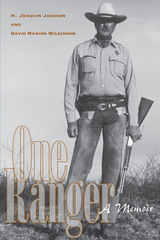
The career of André Malraux has run the political gamut, from Communist to Gaullist alliances. Malraux has been (occasionally simultaneously) aesthete, agitator, and bureaucrat. He is also generally acknowledged to be one of this century’s major novelists and art critics.
In this study, David Wilkinson attempts to discern and define Malraux’s political concepts. The character and unity of those concepts, he argues, is primarily to be found in Malraux’s direct and indirect declarations on the act of creation, the philosophy of art, and the nature of the artist.
“Malraux’s thought is not simple,” Mr. Wilkinson warns in his Preface. “His writing is unsystematic; and his politics has at all times to be disentangled from the intricacies of a genre other than political thought.” In an intensive examination of Malraux’s fiction, essays, and speeches, Mr. Wilkinson delineates Malraux’s conviction that the deepest human needs are those which are cultural rather than, say, economic. The aspirations that were once satisfied by religion are, in a secular world, fulfilled by artistic creation; this creativity, in turn, is fostered by the recognition and appreciation of the objects of culture from all ages and regions, and it therefore devolves upon the state to take as one of its central activities the massive dissemination of these objects.
Mr. Wilkinson’s approach—a chronological dissection of the political themes implicit in Malraux’s work—illuminates the essential continuity and significance of Malraux’s thought and reveals a man who is complex but comprehensible.

When his picture appeared on the cover of Texas Monthly, Joaquin Jackson became the icon of the modern Texas Rangers. Nick Nolte modeled his character in the movie Extreme Prejudice on him. Jackson even had a speaking part of his own in The Good Old Boys with Tommy Lee Jones. But the role that Jackson has always played the best is that of the man who wears the silver badge cut from a Mexican cinco peso coin—a working Texas Ranger. Legend says that one Ranger is all it takes to put down lawlessness and restore the peace—one riot, one Ranger. In this adventure-filled memoir, Joaquin Jackson recalls what it was like to be the Ranger who responded when riots threatened, violence erupted, and criminals needed to be brought to justice across a wide swath of the Texas-Mexico border from 1966 to 1993.
Jackson has dramatic stories to tell. Defying all stereotypes, he was the one Ranger who ensured a fair election—and an overwhelming win for La Raza Unida party candidates—in Zavala County in 1972. He followed legendary Ranger Captain Alfred Y. Allee Sr. into a shootout at the Carrizo Springs jail that ended a prison revolt—and left him with nightmares. He captured "The See More Kid," an elusive horse thief and burglar who left clean dishes and swept floors in the houses he robbed. He investigated the 1988 shootings in Big Bend's Colorado Canyon and tried to understand the motives of the Mexican teenagers who terrorized three river rafters and killed one. He even helped train Afghan mujahedin warriors to fight the Soviet Union.
Jackson's tenure in the Texas Rangers began when older Rangers still believed that law need not get in the way of maintaining order, and concluded as younger Rangers were turning to computer technology to help solve crimes. Though he insists, "I am only one Ranger. There was only one story that belonged to me," his story is part of the larger story of the Texas Rangers becoming a modern law enforcement agency that serves all the people of the state. It's a story that's as interesting as any of the legends. And yet, Jackson's story confirms the legends, too. With just over a hundred Texas Rangers to cover a state with 267,399 square miles, any one may become the one Ranger who, like Joaquin Jackson in Zavala County in 1972, stops one riot.
READERS
Browse our collection.
PUBLISHERS
See BiblioVault's publisher services.
STUDENT SERVICES
Files for college accessibility offices.
UChicago Accessibility Resources
home | accessibility | search | about | contact us
BiblioVault ® 2001 - 2024
The University of Chicago Press









